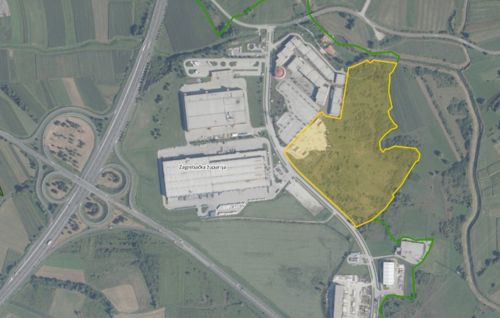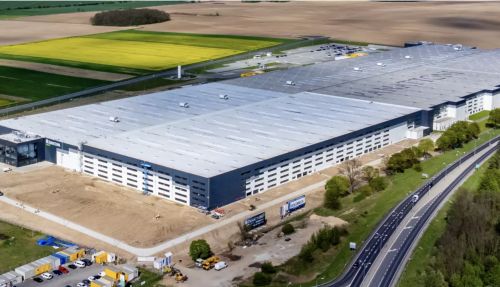Flat-lining on the WSE
Stock market reportTwo years after the Brexit vote, the moods on the global stock exchanges are still being determined by political unrest in Europe. This time the flash point is Italy, now governed by extremely populist parties that are – to put it mildly – somewhat antipathetical towards the EU. On the other hand, the prospect of a two-tier union is becoming more and more realistic, as the indications are that the euro zone will strengthen its cooperation and be given its own budget, etc. This means that investors will eventually differentiate markedly between countries with the euro and others, such as Poland. But before that happens, the Brexit scenario could be followed by Italy leaving the EU – an extremely important country for the bloc (with the fourth largest economy in Europe) and even more integrated with Europe than the UK. A likely debate on Italy’s exit from the EU or the eurozone would push the stock markets down even further – and we have already had a foretaste of this on the bond market, where investors are now disdain towards the securities of the Italian government, which in turn has weakened the euro. Theoretically, a weaker euro should help EU exports, but the general uncertainty is not encouraging them to invest, in terms of both business expenditure and purchases on the capital market. All the more so now that the central bank of the eurozone has signalled an end to the pumping of money into the market, which was one of the factors driving the increases in stock prices. Such declarations from the European Central Bank are contributing to price reductions on emerging markets, from Brazil to Poland, because it is capital surpluses that have been invested in such markets. Interest rates are also set to rise in the US, where the economic situation is still very good (growth of almost 3 pct) – and this is also deterring investment in shares. June was a worse month for the American stock exchanges than May, as the trade war between the two great economic powers – the US and China – enters its latest phase, with more Chinese goods, such as hi-tech products, having US tariffs imposed upon them. Investors were also left unimpressed by the G7 summit debacle, where the obvious friction between the EU and the US does not bode well for the prospects for any resolution to the price war and trade relations between the largest economic powers in the world. In such an environment it is no wonder that the Polish stock exchange has been performing rather poorly. Hardly anyone now remembers that WIG20 was at the level of 2,600 points a few months ago, as it approaches the mid-year down at around 2,200 points. All this is happening despite the continuing excellence of the country’s macroeconomic fundamentals – the GDP growth rate of over 5 pct is so high that economists are warning of that a burnout of the growth fuel and dynamics are inevitable. Still, this is not the only reason for falling share prices in Poland – many foreign investors believe that there are other emerging markets that are more attractive. Our bourse is in the process of being marginalised by the government, whose amendments to the regulations for open pension funds have resulted in the latter withdrawing an average of about PLN 520 mln per month from the WSE, which tallies at more than PLN 6 bln per year. And the launch of a new scheme to float retirement savings on the capital market has been postponed again, this timw to 2020. The situation for the sectors looks even more gloomy: WIG-Construction lost 10 pct over the last five weeks, bringing the total slump since the beginning of the year to 22 pct – a 40 pct decline since its peak in April 2017. Construction firms are having no problems when it comes to securing contracts, but it is the rapidly growing costs of materials and labour that are making it difficult for them to achieve high profitability. And since their main client is the Polish state, contract renegotiations are out of the question. There is also a shortage of employees. No wonder that some giants like Budimex are being deterred from building more roads for public money as its price slips, especially since the troubles of construction companies before 2012 are still fresh in investors’ minds. However, in the last few weeks the value of Mostostal Zabrze has grown, in the light of its good recent results and confirmed contracts. Compared to the construction sector, developers are in a much better place. Their index has proved to be the most resistant to the declines on the wider market (slipping back by just 4 pct since the beginning of the year). Among the fairly stable stock market performers in May and June, it is worth highlighting that Polnord (which enjoyed improved results in Q1) may be about to be taken over. Its fragmented shareholding together with its large land bank, the many projects it has launched around the same time along with the current attractiveness of the development segment on the stock exchange, have given the company the confidence to look for a strategic investor. (Mir)
Resilient neighbours
The Hungarian BUX lost almost 3 pct in four weeks, but still proved to be more resistant than the Polish WIG once again. The BUX has declined by more than 10 pct since the beginning of the year and the PX 50 in Prague has slipped by just 2 pct. On the other hand, the last few weeks have been worse for the Czech stock exchange – down by 3.5 pct since May 20th.





















































